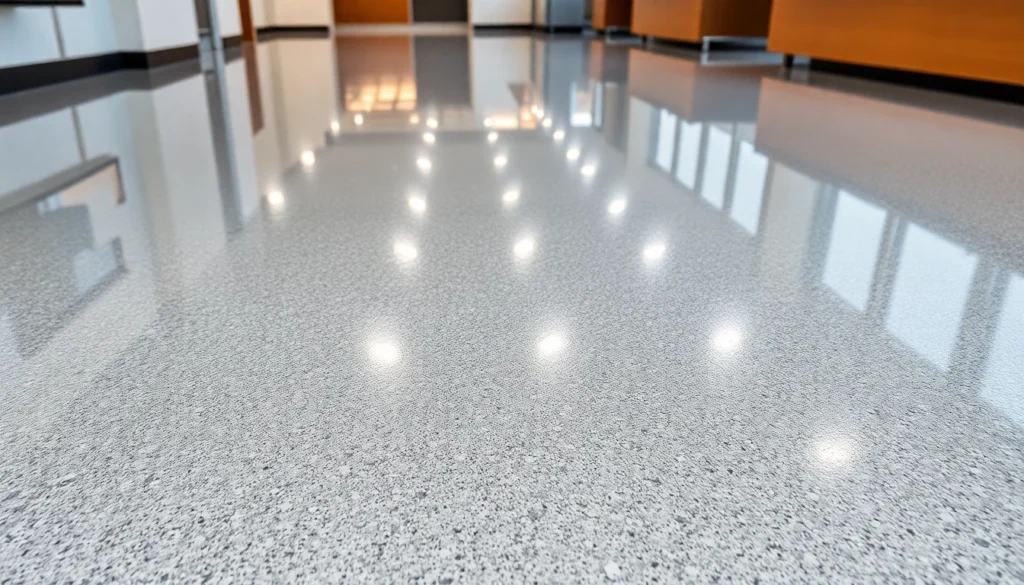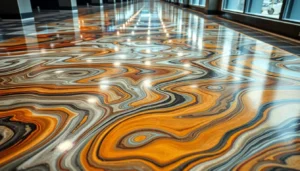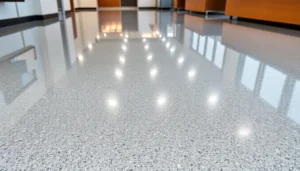Mastering Epoxy Resin Floors: A Complete Guide for Durable and Stylish Surfaces

Understanding Epoxy Resin Floors and Their Benefits
Epoxy resin floors have become increasingly popular across both commercial and residential environments due to their exceptional durability, aesthetic versatility, and ease of maintenance. Whether upgrading a garage, transforming a retail space, or enhancing a warehouse, epoxy flooring offers a modern solution that combines functionality with style. If you’re contemplating a renovation project or new build, exploring the potential of an epoxy resin floor can significantly elevate your space. This comprehensive guide aims to shed light on the essentials of epoxy flooring—from types and installation to maintenance and emerging trends—helping you make informed decisions tailored to your needs.
What Is an Epoxy Resin Floor?
An epoxy resin floor is a seamless, high-performance surface created by applying a resinous epoxy coating over a prepared concrete substrate. Composed of a resin and a hardening agent, epoxy chemically reacts to form a rigid, durable layer resistant to wear, chemicals, and impacts. This coating can be customized in terms of thickness, finish, and color, delivering both protection and aesthetic appeal. Its popularity extends across industrial settings—like manufacturing plants and warehouses—due to its resilience, as well as in residential spaces seeking a sleek, modern look.
Importantly, selecting the right epoxy system is crucial. Factors such as environment, traffic load, and desired appearance influence the choice of specific formulations. For a comprehensive solution that balances performance and style, many opt for epoxy systems designed explicitly for high durability and visual impact, including metallic, flake, or solid color finishes.
Advantages of Installing an Epoxy Resin Floor
- Durability and Longevity: Epoxy floors are renowned for their toughness, capable of withstanding heavy foot traffic, machinery, and equipment, making them ideal for high-use areas.
- Chemical and Stain Resistance: Their resistance to spills—such as oils, acids, and cleaning agents—simplifies cleaning and reduces maintenance costs.
- Seamless and Hygienic Surface: Unlike tiles or concrete, epoxy creates a continuous surface without joints or cracks, preventing dirt and bacteria accumulation.
- Enhanced Aesthetics: Available in numerous colors, textures, and decorative effects, epoxy floors can match any design intent, from industrial to high-end residential décor.
- Ease of Maintenance: Cleaning requires minimal effort—regular sweeping and damp mopping generally suffice—while the surface’s hardness resists scratches and dents.
- Cost-Effectiveness: Considering longevity and low maintenance, epoxy floors often represent a cost-effective flooring solution, especially in demanding environments.
Common Applications in Commercial and Residential Settings
Epoxy resin floors serve a wide array of applications, capitalizing on their robustness and aesthetic potential.
In Commercial Settings
- Retail Spaces: To create inviting, clean environments that withstand foot traffic.
- Industrial Warehouses: For load-bearing floors resistant to chemicals, abrasions, and impacts.
- Food Processing Facilities: Due to their hygienic, non-porous surface that meets strict sanitation standards.
- Garages and Workshops: Offering resistance to oil, grease, and chemicals, combined with a high-end appearance.
In Residential Settings
- Garages and Basements: Providing a long-lasting, easy-to-clean surface that enhances the value and functionality of the space.
- Home Gym Floors: Durable enough to handle weights and high-impact activities.
- Patios or Outdoor Areas: Specialty formulations enable epoxy to withstand weather conditions, creating seamless outdoor living spaces.
Choosing the Right Epoxy Resin System
Types of Epoxy Resins and Their Features
The selection of epoxy resin depends on the specific application requirements. The main types include:
- Standard Epoxy: Suitable for most interior applications, offering good adhesion and chemical resistance.
- Self-Leveling Epoxy: Provides a smooth, glossy finish ideal for decorative applications and high-traffic floors.
- Anti-Slip Epoxy: Contains aggregates or textured surfaces to enhance traction, especially important in wet or oily environments.
- High-Performance Epoxy: Designed for industrial use where maximum durability against chemicals, abrasion, and impact is necessary.
- UV-Resistant Epoxy: Formulated to prevent yellowing and degradation from sunlight, perfect for outdoor or sun-exposed areas.
Factors to Consider Before Installation
Successful epoxy flooring hinges on careful consideration of several factors:
- Substrate Condition: Concrete must be clean, dry, and properly prepared to ensure adequate adhesion.
- Moisture Levels: Excess moisture can cause delamination; appropriate moisture testing is recommended.
- Load Requirements: Consider the expected traffic and load for choosing the right thickness and epoxy system.
- Environmental Conditions: Temperature, humidity, and exposure to chemicals influence formulation selection.
- Design Preferences: Color schemes, decorative finishes, and surface textures should align with aesthetic goals.
Picking Suitable Finishes and Colors
Decorative options are plentiful, including metallic effects, flake finishes, solid colors, and gloss or matte sheens. These choices allow customization to match branding, interior design themes, or functional needs like slip resistance. Professional advice can help determine the best finish to balance appearance with safety and durability.
Step-by-Step Installation Process
Surface Preparation and Substrate Inspection
Proper preparation is the foundation of a successful epoxy floor. This involves:
- Cleaning the surface thoroughly to remove dirt, grease, and existing coatings.
- Repairing cracks, pitting, or unevenness in the concrete.
- Ensuring moisture levels are within acceptable ranges.
- Etching or grinding the surface to promote adhesion.
Advanced surface preparation tools like shot blasters or diamond grinders are often employed for top-quality results.
Mixing and Applying Epoxy Coatings
Follow manufacturer instructions meticulously. Mix epoxy components in precise ratios, ensuring thorough blending to prevent curing issues. Application methods include:
- Brush or roller for smaller areas.
- Spray systems for large or complex surfaces.
Applying in thin, even coats prevents bubbling and ensures optimal curing. Multiple layers may be necessary, with adequate drying time between coats.
Drying, Curing, and Final Touches
Allow sufficient curing time under recommended conditions, avoiding foot traffic or chemical exposure during this period. Once cured, the surface can be optionally sealed or topped with protective gloss or anti-slip coats for additional durability.
Maintenance, Repairs, and Longevity
Cleaning and Upkeep Tips for Longevity
Routine cleaning involves sweeping to remove debris and mopping with mild detergents. Avoid harsh chemicals that can degrade the surface. Applying a protective topcoat periodically can enhance gloss and resistance.
Common Issues and How to Fix Them
- Peeled or Cracked Coatings: Usually caused by improper preparation or curing; can be repaired by patching with fresh epoxy.
- Discoloration or Yellowing: Often due to UV exposure; UV-resistant formulations can prevent this.
- Surface Wear or Dulling: Restored by reapplying a clear topcoat or polishing.
Enhancing Durability with Protective Topcoats
Applying high-quality sealers or clear coats can protect against UV damage, chemicals, and abrasion. This maintenance step extends the lifespan and preserves the aesthetic appeal of your epoxy floor.
Innovations and Trends in Epoxy Flooring
Latest Epoxy Resin Technologies
Recent advancements include UV-stable epoxies, rapid curing formulations, and environmentally friendly, low-VOC systems. These innovations improve performance while reducing environmental impact.
Design Trends and Aesthetic Innovations
Decorative options now include metallic effects, 3D imaging, and microchip infusions for personalized, eye-catching finishes. This diversity allows designers and homeowners to craft unique, high-end surfaces.
Eco-Friendly and Sustainable Epoxy Options
Water-based and low-VOC epoxies are gaining popularity, aligning performance with environmental responsibility. These sustainable options maintain durability without compromising ecological standards.






